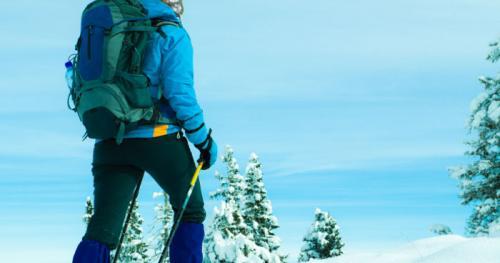Sustainable Recreation

A snowshoer treading lightly on the land
If you love wilderness, you probably worry about how your recreation activities may harm the wild places you visit.
Fortunately, there are many simple steps you can take to make sure that your trip to the wild is a happy for everyone, including the great outdoors.
Outdoor recreation done sustainably on public lands
Sustainable recreation is where planning ahead, outdoor ethics, the principles of Leave No Trace and green gear buying come together.
Here are some tips.
Outdoor recreation on public lands: a seasonal overview
Winter:
When it comes to outdoor recreation, remember there’s a place for everyone on the landscape. But every place is not for everyone. For example, when snowmobiling, be sure to stick to designated snowmobiling trails so you can sustainably enjoy the outdoors without harming wildlife habitat and the enjoyment of non-motorized users.
Spring:
Public lands need some TLC this time of year. Spring rains and snowmelt can turn popular trails into mud bogs. When crisscrossed by hiking boots, knobby tires and horse hoofs, the trails begin to erode harming both the trails and nearby streams. So talk to the pros at your local outdoor gear shop or ranger station. They will know where to find the driest trails around.
Summer:
Support sustainable access to mountain biking trails through organizations like the Wilderness Recreation Partnership. For those who want to camp in popular backcountry areas or float wild rivers flowing through public lands, get to know the inner workings of the permitting system that ensures these wild places are not overrun.
Fall:
Outdoor recreation on public lands includes hunting. So if you are not a hunter, be sure to wear a blaze orange hat or bandana (you can also tie one to your dog’s collar) if you plan to hike in popular hunting areas.
Hunting is a great way to participate in sustainable recreation. Wildlife biologists help set the number of licenses and tags available to hunters, depending on the size and health of wildlife populations.
By taking elk, deer and other game, hunters maintain sustainable populations so there’s a good balance between the number of animals and available forage.
Helpful links:
- Leave No Trace:
http://www.lnt.org - A New Century of Forest Planning blog, Sustainable Recreation:
http://ncfp.wordpress.com/2011/02/10/sustainable-recreation - Framework for Sustainable Recreation:
http://www.fs.usda.gov/Internet/FSE_DOCUMENTS/stelprdb5346549.pdf
